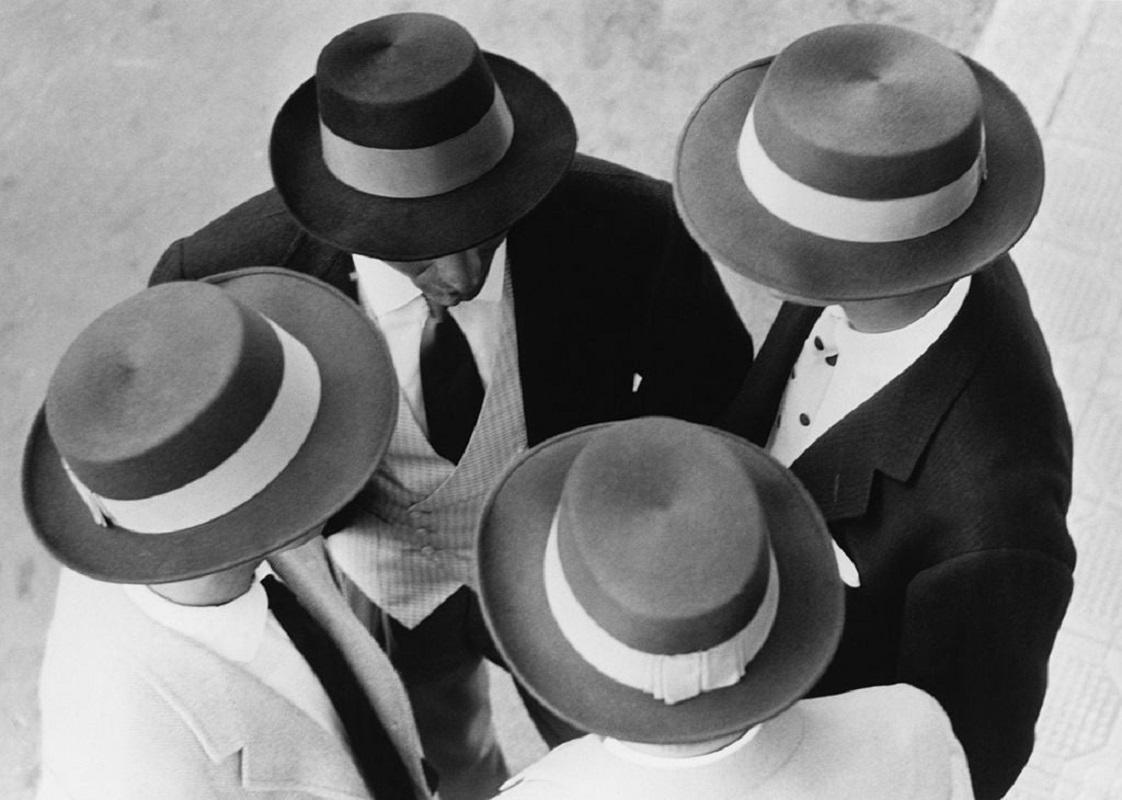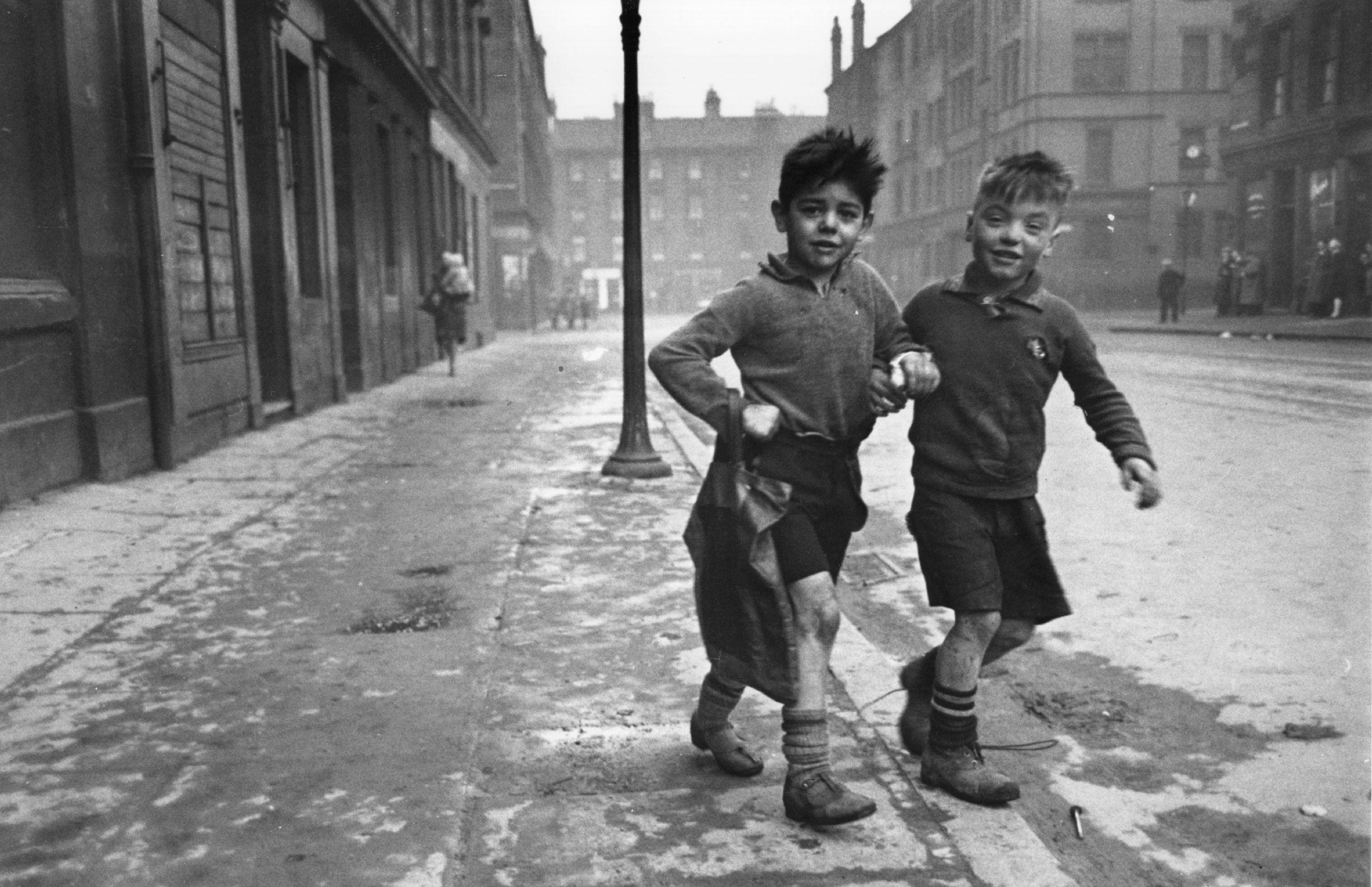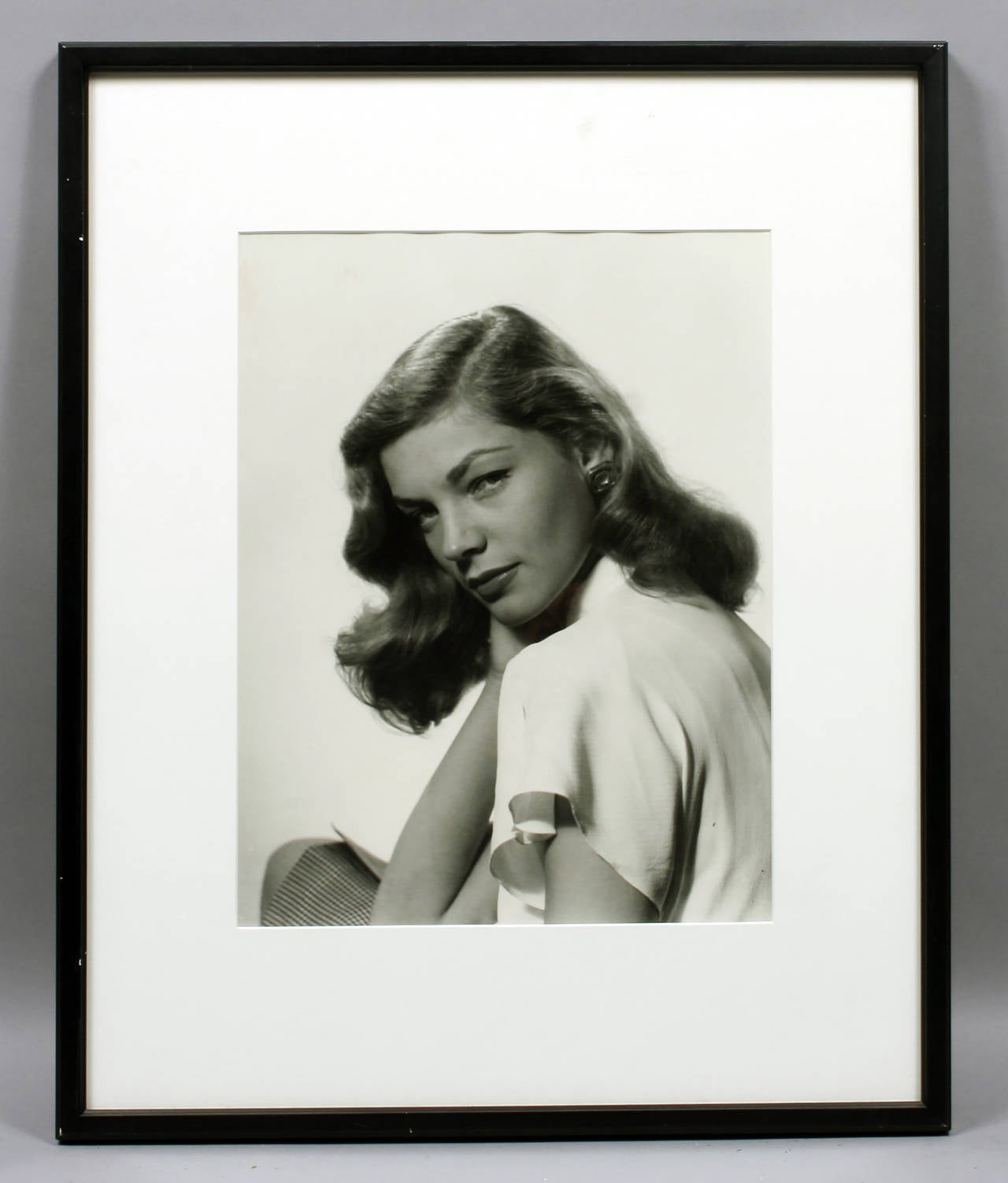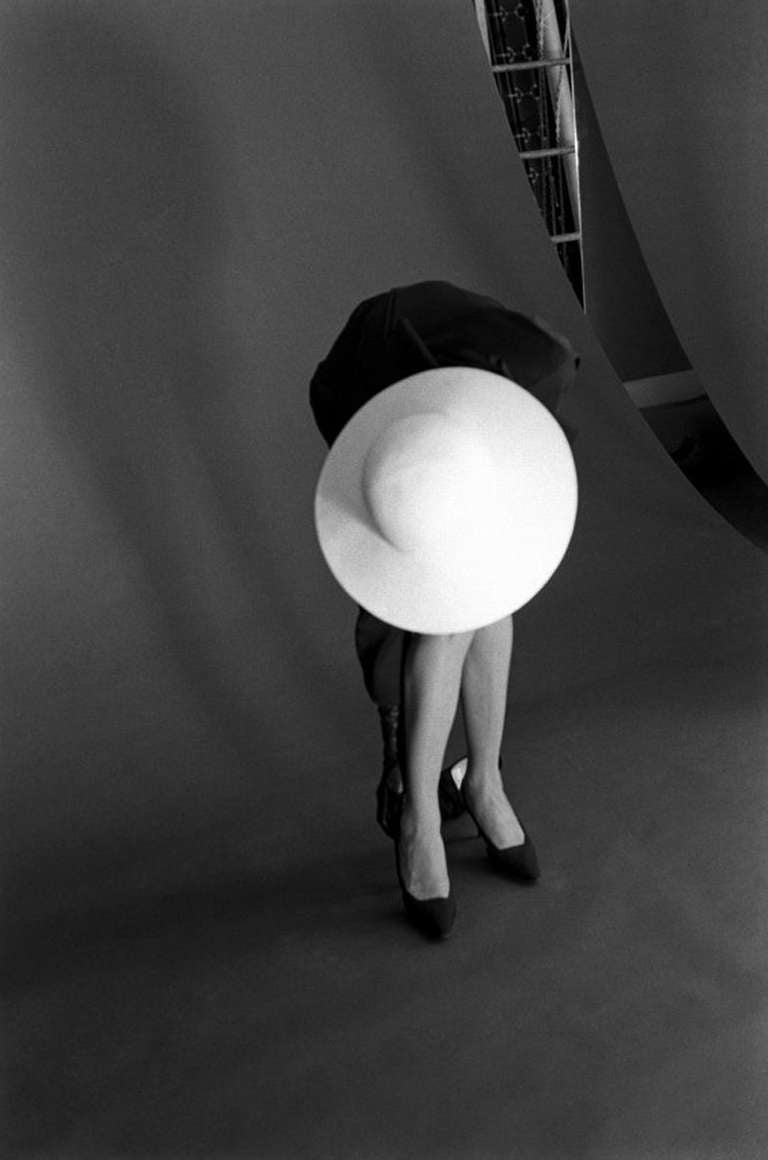Items Similar to Last Bus In London by Bert Hardy - Limited Edition silver gelatine print
Want more images or videos?
Request additional images or videos from the seller
1 of 6
Bert HardyLast Bus In London by Bert Hardy - Limited Edition silver gelatine print 1953 (printed later)
1953 (printed later)
About the Item
Last Bus In London by Bert Hardy
Limited Edition silver gelatine print
A couple saying goodbye on a bus in Shaftesbury Avenue in London, July 1953 .
Original Publication: Picture Post - 6576 - Known Your Piccadilly - pub. 4th July 1953
(Photo by Bert Hardy/Picture Post/Hulton Archive/Getty Images Archive London England)
Paper size 12x16 inches / 31 x 41 cm
Produced utilising the original negative
Numbered and stamped by the Getty Archive London
Limited edition to 300 only
Silver gelatine fibre based baryta paper print
Certificate of authenticity included
printed 2024
Ships securely from London.
Other sizes and Framing available on request.
Bert Hardy
Bert Hardy
Albert William Thomas Hardy (19 May 1913 – 3 July 1995) was an English documentary and press photographer known for his work published in the Picture Post magazine between 1941 and 1957.
Life and work
Born in Blackfriars, Bert Hardy rose from humble working class origins in Southwark, London. The eldest of seven children, he left school at age 14 to work for a chemist who also processed photos. His first big sale came in 1936 when he photographed King George V and Queen Mary in a passing carriage during the Silver Jubilee celebrations, and sold 200 small prints of his best view of the King. His first assignment, at age 23, was to photograph Hungarian actor Sakall at the Mayfair Hotel. Hardy freelanced for The Bicycle magazine, and bought his first small-format 35 mm Leica. He signed on with the General Photographic Agency as a Leica photographer, later founding his own freelance firm, Criterion.
General Photographic Agency
General Photographic Agency a Fleet Street, London agency, sold photos at least between 1880-1950.
Picture Post and World War II
In 1941, Hardy was recruited by the then editor Tom Hopkinson of the leading picture publication of the 1930s to the 1950s, Picture Post. Founded in 1938 and funded by publisher Edward Hulton, the magazine's first editor was Hungarian émigré Stefan Lorant (1901–97) assisted by Hopkinson, who took over as editor from 1940. The picture-centric, left-leaning and reasonably-priced publication was highly successful and circulation soon rose to over a million. Hardy's photographer colleagues included Felix H. Man (aka Hans Baumann), John Chillingworth, Thurston Hopkins, Kurt Hutton, Leonard McCombe, Francis Reiss, Humphrey Spender, Grace Robertson and Bill Brandt, who went out with the writers on stories together, working as colleagues, not competitors.
Hardy was self-taught and used a Leica—unconventional gear for press photographers of the era—but went on to become the Post's Chief Photographer, after he earned his first photographer credit for his 1 February 1941 photo-essay about Blitz-stressed fire-fighters.
Hardy served as a war photographer in the Army Film and Photographic Unit (AFPU) from 1942 until 1946: he took part in the D-Day landings in June 1944; covered the liberation of Paris; the allied advance across the Rhine; and was one of the first photographers to enter the liberated Belsen to record the suffering there. He also saved some Russian slaves from a fire set by German police in the city of Osnabrück, before photographing the aftermath.
Near the end of World War II, Hardy went to Asia, where he became Lord Mountbatten's personal photographer.
He later went on to cover the Korean War along with journalist James Cameron for Picture Post, reporting on atrocities committed by Syngman Rhee's police under the United Nations flag[13] at Pusan in 1950, and later on that war's turning point, the Battle of Inchon, photojournalism for which he won the Missouri Pictures of the Year Award, "obtaining pictures of the landing at Inchon as, unlike other members of the press, Hardy could shoot 1/15 sec at fl.5 with his Leica miniature".
Late career
Hardy stayed on until Picture Post ceased publication in June 1957. It succumbed to the rise of television and falling circulation, and its increasingly unpopular identification with Labour's 'New Britain' and 'Fair Shares for All'; the party being defeated in the 1951 election.[15] There being no other outlets for photojournalists, Hardy became an advertising photographer before giving the medium up altogether to become a farmer in 1964.
Recognition
Three of Hardy's photos were used in Edward Steichen's famous The Family of Man exhibition and book; two were taken in Burma, including one of a monk at his desk in deep thought. Another shows a young couple, much in love and relaxing by the window of a tiny basement flat, photographed for part of a feature in Picture Post magazine, 'Scenes From The Elephant', published 8 January 1949, on everyday life in the Elephant and Castle district of South London. According to Hardy, the man in that portrait was a Canadian recently released from prison who had just spent a night with the prostitute in the photographer's image.
One of his most famous, and Hardy long claimed his favorite, photo, shows two street urchins off on a lark in Gorbals, an image which has come to represent Hardy's keenest documentary skill. He said he liked it so much because it represented his own rough-and-tumble upbringing, with Glasgow's Gorbals very much resembling London's Elephant & Castle District. Hardy himself was photographed many times, including during the war; three very good photo-portraits of him are currently in the Photographs Collection of the National Portrait Gallery.
Having written an article for amateur photographers suggesting that you didn't need an expensive camera to take good pictures, Hardy staged a carefully posed photograph of two young women sitting on railings above a breezy Blackpool promenade using a Box Brownie in 1951, a photograph which has since become an iconic image of post-war Britain.
Just before Picture Post closed, Hardy took 15 photos of the Queen's entrance at the Paris Opera on 8 April 1957, which were assembled as a photo-montage by the magazine's technicians. It was one of the most challenging photo-montages ever created, because there were a sizeable live crowd, guards, and other dignitaries, in front of his camera. After leaving Picture Post Hardy became one of the most successful advertising photographers until his retirement in 1964 to his farm in Oxted.
His second wife, Sheila, was a photo researcher for Picture Post and still holds the copyright to his private collection of photos; Getty Images holds the copyright to his Picture Post works.
A memorial plaque honouring him is in the journalists' church, St Bride's, Fleet Street, London.
In October 2008, London Borough of Southwark unveiled a Blue Plaque on Bert Hardy's family home at The Priory, Webber Street, Southwark. The plaque was erected following a popular vote.
- Creator:Bert Hardy (1913-1995, British)
- Creation Year:1953 (printed later)
- Dimensions:Height: 12 in (30.48 cm)Width: 16 in (40.64 cm)
- Medium:
- Movement & Style:
- Period:
- Framing:Framing Options Available
- Condition:
- Gallery Location:London, GB
- Reference Number:
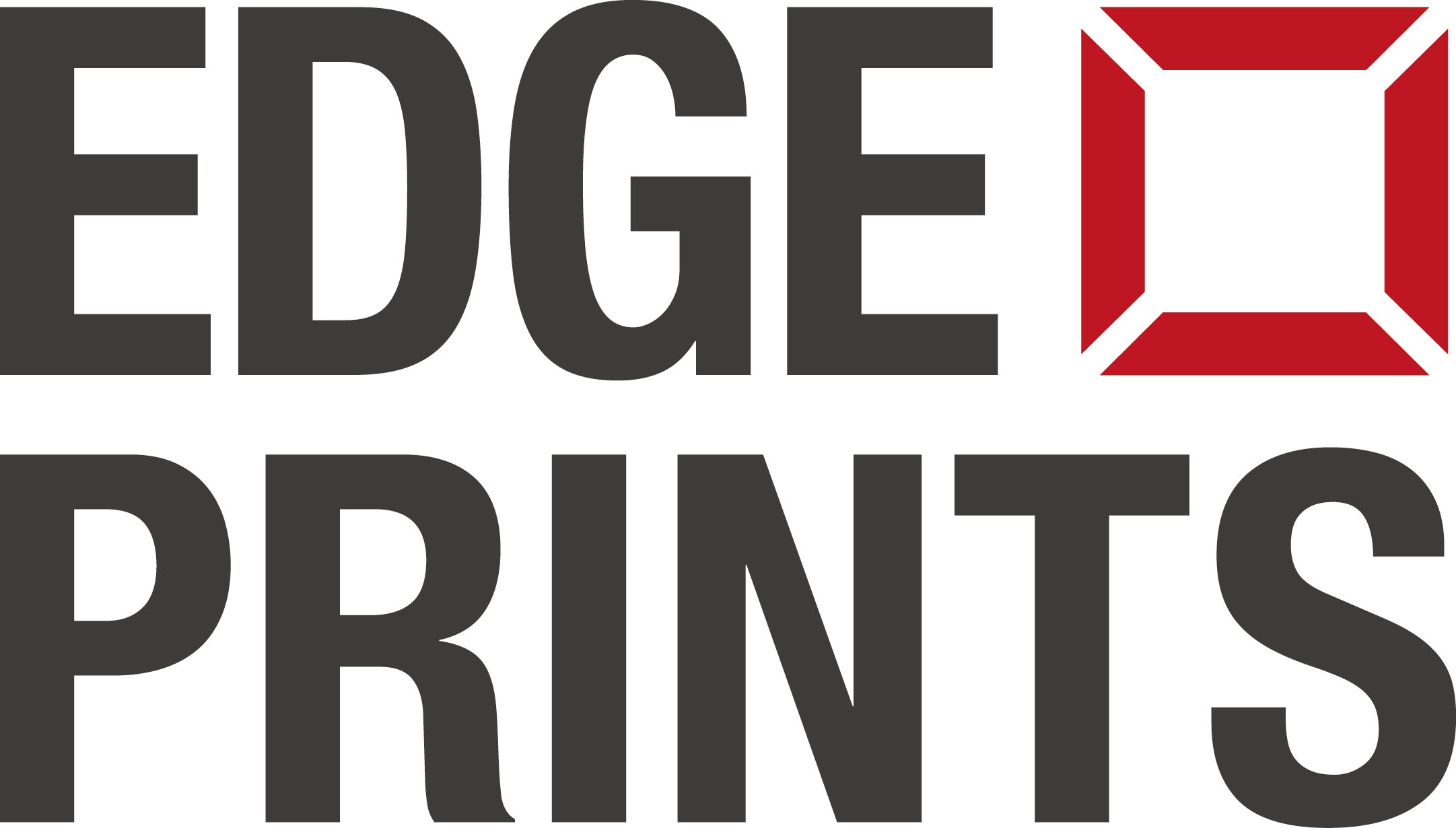
About the Seller
4.9
Gold Seller
These expertly vetted sellers are highly rated and consistently exceed customer expectations.
Established in 2011
1stDibs seller since 2016
483 sales on 1stDibs
Typical response time: <1 hour
- ShippingRetrieving quote...Ships From: London, United Kingdom
- Return PolicyA return for this item may be initiated within 7 days of delivery.
More From This SellerView All
- Italian Hats by Hulton ArchiveLocated in London, GB"Italian Hats" by Hulton Archive Models wearing a collection of Italian designed hats for winter 1956/7 and spring 1957, at the fifth Men's Fashion Festival, San Remo, Italy. Unfra...Category
1950s Modern Black and White Photography
MaterialsBlack and White, Silver Gelatin
- Bert Hardy Gorbals Boys 1948 - Silver Gelatin Fibre PrintBy Bert HardyLocated in London, GBGorbals Boys (1948) - Silver Gelatin Fibre Print (Photo by Bert Hardy/Getty Images Archive London) Possibly Bert Hardy's most famous image. Two boys in the Gorbals area of Glasgow. The Gorbals tenements were built quickly and cheaply in the 1840s, providing housing for Glasgow's burgeoning population of industrial workers. Conditions were appalling; overcrowding was standard and sewage and water facilities inadequate. The tenements housed about 40,000 people with up to eight family members sharing a single room, 30 residents sharing a toilet and 40 sharing a tap. By the time this photograph was taken 850 tenements had been demolished since 1920. Redevelopment of the area began in the late 1950s and the tenements were replaced with a modern tower block complex in the sixties. Original Publication: Picture Post - 4499 - The Forgotten Gorbals - pub. 1948 Additional Information: Unframed Paper Size: 20 x 16'' inches / 51 x 41 cm Printed 2024 Silver Gelatin Fibre Print Limited edition issued and stamped on front by the Getty Archive London Edition size 300 only NOTE OTHER SIZES OF THIS IMAGE AVAILABLE 10 x 8'' 10 x 12'' 12 x 16'' 16 x 20'' 20 x 24'' FRAMING AVAILABLE ON REQUEST Bert Hardy Albert William Thomas Hardy (19 May 1913 – 3 July 1995) was an English documentary and press photographer known for his work published in the Picture Post magazine between 1941 and 1957. Life and work Born in Blackfriars, Bert Hardy rose from humble working class origins in Southwark, London. The eldest of seven children, he left school at age 14 to work for a chemist who also processed photos. His first big sale came in 1936 when he photographed King George V and Queen Mary in a passing carriage during the Silver Jubilee celebrations, and sold 200 small prints of his best view of the King. His first assignment, at age 23, was to photograph Hungarian actor Sakall at the Mayfair Hotel. Hardy freelanced for The Bicycle magazine, and bought his first small-format 35 mm Leica. He signed on with the General Photographic Agency as a Leica photographer, later founding his own freelance firm, Criterion. General Photographic Agency General Photographic Agency a Fleet Street, London agency, sold photos at least between 1880-1950. Picture Post and World War II In 1941, Hardy was recruited by the then editor Tom Hopkinson of the leading picture publication of the 1930s to the 1950s, Picture Post. Founded in 1938 and funded by publisher Edward Hulton, the magazine's first editor was Hungarian émigré Stefan Lorant (1901–97) assisted by Hopkinson, who took over as editor from 1940. The picture-centric, left-leaning and reasonably-priced publication was highly successful and circulation soon rose to over a million. Hardy's photographer colleagues included Felix H. Man (aka Hans Baumann...Category
1940s Modern Figurative Photography
MaterialsBlack and White, Silver Gelatin
- Programmer (1964) Silver Gelatin Fibre Print - OversizedBy H. Armstrong RobertsLocated in London, GBProgrammer (1964) Silver Gelatin Fibre Print - Oversized (Photo by H. Armstrong Roberts/Alamy) 1st November 1964. A technician programming mainframe computer at control room conso...Category
1960s Modern Figurative Photography
MaterialsSilver Gelatin, Black and White
- New Look (1955) - Silver Gelatin Fibre PrintBy Kurt HuttonLocated in London, GBNew Look (1955) - Silver Gelatin Fibre Print (Photo by Kurt Hutton/Getty Images) A model wearing a black cocktail dress and a black velvet wide-brimmed hat, designed by Ronald Paterson...Category
1950s Modern Figurative Photography
MaterialsBlack and White, Silver Gelatin
- High Wire Motorcycle (1960) Silver Gelatin Fibre Print - OversizedBy H. Armstrong RobertsLocated in London, GBHigh Wire Motorcycle (1960) Silver Gelatin Fibre Print - Oversized (Photo by H. Armstrong Roberts/Alamy) A high-wire act with a man standing on his head on a motorcycle with man a...Category
1960s Modern Figurative Photography
MaterialsBlack and White, Silver Gelatin
- Swan In A Car (1936) - Silver Gelatin Fibre PrintLocated in London, GBSwan In A Car (1936) - Silver Gelatin Fibre Print (Photo by Fox Photos/Getty Images) 6th April 1936: A tame swan named Leila is given a lift in the back of a car. Additional Info...Category
1930s Modern Figurative Photography
MaterialsBlack and White, Silver Gelatin
You May Also Like
- Phillipe Halsman Portrait Photography Lauren Bacall Black and White Framed 1944By Philippe HalsmanLocated in Buffalo, NYThe work offered for sale here is an original vintage silver gelatin print hand created by Halsman in 1944 and exhibited at the International Center for Photography. Philippe Halsman was at one point considered the best photo-portraitist in France. He had an incessant interest in faces: “Every face I see seems to hide—and sometimes fleetingly reveal—the mystery of another human being.” Halsman’s photographs of politicians, celebrities, and intellectuals were featured widely in magazines like LIFE and Vogue. His more famous subjects included the likes of Marc Chagall, Le Corbusier, Audrey Hepburn, and Albert Einstein. He also had a 37-year collaboration with Salvador Dalí, which resulted in several famous surrealist series including the “Dalí’s Mustache” portraits...Category
1940s Modern Figurative Photography
MaterialsSilver Gelatin, Photographic Paper, Wood
- Victoire Fixing ShoeBy Jerry SchatzbergLocated in New York, NYFrom creator of poetic images to compelling storyteller, Jerry Schatzberg has, over the past three decades, excelled in both the realms of photography and filmmaking. Published in Vo...Category
1960s Modern Black and White Photography
MaterialsSilver Gelatin
- Wall StreetBy Jerry SchatzbergLocated in New York, NYFrom creator of poetic images to compelling storyteller, Jerry Schatzberg has, over the past three decades, excelled in both the realms of photography and filmmaking. Published in Vo...Category
1950s Modern Black and White Photography
MaterialsSilver Gelatin
- The Carlton Hotel (Slim Aarons Estate Edition)By Slim AaronsLocated in New York, NYA Cadillac with Florida plates parked outside the Carlton Hotel, Cannes, France, circa 1955. Estate stamped and hand numbered edition of 150 with certificate of authenticity from th...Category
1950s Modern Black and White Photography
MaterialsSilver Gelatin
- Chancellery GraffitiBy Slim AaronsLocated in New York, NYChancellery Graffiti, 1945 Silver gelatin print 30 x 30 inches Edition of 150 1945: Graffiti on the wall of Hitler’s chancellery shortly after his death. The men are Life photographers Hank...Category
1940s Modern Black and White Photography
MaterialsSilver Gelatin
- Soho Waiters Race (Slim Aarons Estate Edition)By Slim AaronsLocated in New York, NYWaiters carrying half bottles of champagne set off on the annual waiters' race from Soho Square to Greek Street, in London's Soho, 1955 Estate stamped and hand numbered edition of 1...Category
1950s Modern Black and White Photography
MaterialsSilver Gelatin
